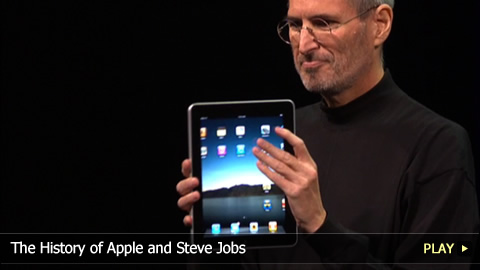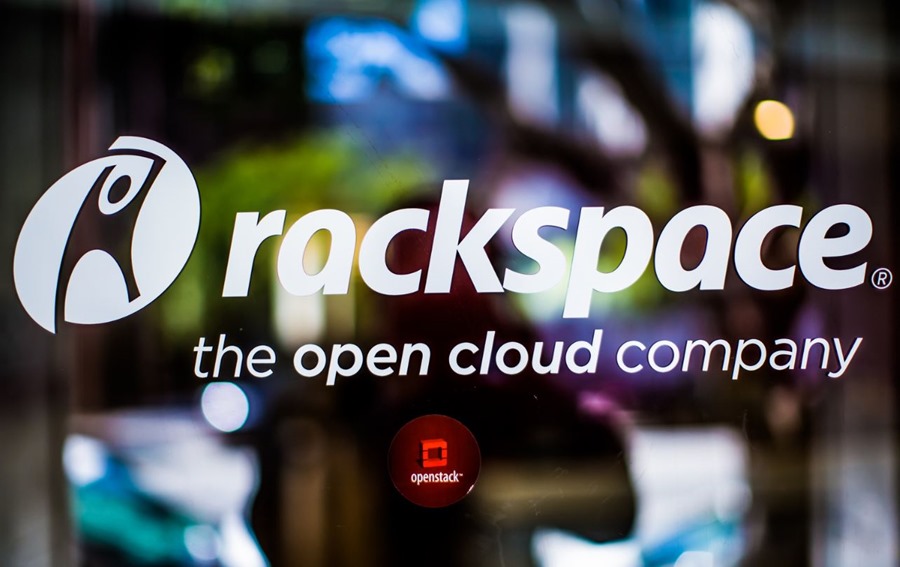The iPad is Apple’s tablet computer, unveiled in January, 2010, and launched in April, 2010.
 The second generation of the iPad — the iPad 2 — was unveiled on March 2, 2011. It will be available for sale in the U.S. on March 11, 2011 and in selected countries worldwide on March 25, 2011. Read more about the iPad 2 here >
The second generation of the iPad — the iPad 2 — was unveiled on March 2, 2011. It will be available for sale in the U.S. on March 11, 2011 and in selected countries worldwide on March 25, 2011. Read more about the iPad 2 here >
The iPad is particularly marketed as a platform for audio and visual media such as books, periodicals, movies, music, and games, as well as web content. At about 1.5 pounds (680 grams), its size and weight are between those of most contemporary smartphones and laptop computers. Apple sold 3 million of the devices in 80 days after the release.
According to a report released by Strategy Analytics, the Apple iPad has gained a 95 percent share sales of Tablet PC at the end of second quarter 2010. And during the second quarter 2010, Apple had sold 4.19 million iPads around the world.
[youtube_sc url=”http://www.youtube.com/watch?v=FpX-AwrAqKA” width=”500″ height=”300″ modestbranding=”1″ fs=”1″]
The iPad runs the same operating system as the iPod Touch and iPhone. It can run its own applications as well as ones developed for the iPhone. Without modification, it will only run programs approved by Apple and distributed via its online store.
Like iPhone and iPod Touch, the iPad is controlled by a multitouch display — a break from most previous tablet computers, which used a pressure-triggered stylus. The iPad uses a Wi-Fi data connection to browse the Internet, load and stream media, and install software. Some models also have a 3G wireless data connection which can connect to GSM 3G data networks. The device is managed and synced by iTunes on a personal computer via USB cable. Media reaction to the device has generally been neutral or positive, with more positive reaction after the device was launched.
History
Apple’s first tablet computer was the Newton MessagePad 100, introduced in 1993, which led to the creation of the ARM6 processor core with Acorn Computers. Apple also developed a prototype PowerBook Duo-based tablet, the PenLite, but in order to avoid hurting MessagePad sales did not sell it. Apple released several more Newton-based PDAs, and discontinued the last, the MessagePad 2100, in 1998.
With the success of the introduction of portable music player iPod in 2001, Apple re-entered the mobile-computing market in 2007 with the iPhone. Smaller than the iPad but featuring a camera and mobile phone, it pioneered the multitouch finger-sensitive touchscreen interface of Apple’s mobile operating system—iOS. By late 2009, the iPad’s release had been rumored for several years. Mostly referred to as “Apple’s tablet”, iTablet and iSlate were among the speculated names. The iPad was announced on January 27, 2010 by Steve Jobs at an Apple press conference at the Yerba Buena Center for the Arts in San Francisco.
Jobs later admitted that the iPad was developed before the iPhone. Upon realizing that it would work just as well as a mobile phone, Jobs put development of the iPad on hold and decided to develop the iPhone instead.
Hardware, Screen and input
The iPad’s touchscreen display is a 9.7 in (25 cm) liquid crystal display (1024 × 768 pixels) with fingerprint-resistant and scratch-resistant glass. Like the iPhone, the iPad is designed to be controlled by bare fingers; normal gloves and styli that prevent electrical conductivity may not be used, although there are special gloves and capacitive styli designed for this use.
The display responds to two other sensors: an ambient light sensor to adjust screen brightness and a 3-axis accelerometer to sense iPad orientation and switch between portrait and landscape modes. Unlike the iPhone and iPod touch built-in applications, which work in three orientations (portrait, landscape-left and landscape-right), the iPad built-in applications support screen rotation in all four orientations (the three aforementioned ones along with upside-down), meaning that the device has no intrinsic “native” orientation; only the relative position of the home button changes.
In total there are four physical switches on the iPad, including a home button below the display that returns the user to the main menu, and three plastic physical switches on the sides: wake/sleep and volume up/down, plus a third which, as of iOS 4.2, acts as a mute switch. Initially this switch was utalised to lock out the screen rotation function (reportedly to prevent unintended rotation when the user is lying down). However, with the iOS 4.2 update, this functionality was removed and rotation lock is now controlled with a software toggle via the iOS task switcher. There is no means to reassign the physical switches functionality in the official iOS release.
Ars Technica noted the similarity between the iPad and Star Trek’s fictional PADD tablet computer, both in name and functionality.
Connectivity
The iPad can use Wi-Fi network trilateration from Skyhook Wireless to provide location information to applications such as Google Maps. The 3G model contains A-GPS to allow its position to be calculated with GPS or relative to nearby cellphone towers; it also has a black plastic accent on the back side to improve 3G radio sensitivity.
For wired connectivity, the iPad has a proprietary Apple dock connector; it lacks the Ethernet and USB ports of larger computers.
Audio and output
The iPad has two internal speakers that push mono sound through two small sealed channels to the three audio ports carved into the bottom-right of the unit. A volume switch is on the right side of the unit.
A 3.5-mm TRS connector audio-out jack on the top-left corner of the device provides stereo sound for headphones with or without microphones and/or volume controls. The iPad also contains a microphone that can be used for voice recording.
The built-in Bluetooth 2.1 + EDR interface allows wireless headphones and keyboards to be used with the iPad. However, the iOS does not currently support file transfer via Bluetooth. iPad also features 1024 x 768 VGA video output for connecting an external display or television.
Power and battery
The iPad uses an internal rechargeable lithium-ion polymer battery. The batteries are made in Taiwan by Simplo Technology, which makes 60% of them, and Dynapack International Technology. The iPad is designed to be charged with a high current (2 amperes) using the included USB 10 W power adapter. While it can be charged by a standard USB port from a computer, these are limited to 500 milliamperes (half an amp). As a result, if the iPad is turned on while being charged with a normal USB computer port, it will charge much more slowly, if at all.
Apple claims that the iPad’s battery can provide up to 10 hours of video, 140 hours of audio playback, or one month on standby. Like any battery technology, the iPad’s LiPo battery loses capacity over time, but is not designed to be user-replaceable. In a program similar to the battery-replacement program for the iPod and the original iPhone, Apple will replace an iPad that does not hold an electrical charge with a refurbished iPad for a fee of $99 (plus $6.95 shipping).
Storage and SIM
The iPad was released with three options for internal storage size: a 16, 32, or 64 GB flash drive. All data is stored on the flash drive and there is no option to expand storage. Apple sells a camera connection kit with an SD card reader, but it can only be used to transfer photos and videos.
The side of the Wi-Fi + 3G model has a micro-SIM slot (not mini-SIM). Unlike the iPhone, which is usually sold locked to specific carriers, the 3G iPad is sold unlocked and can be used with any compatible GSM carrier. Japan is the exception to this, where the iPad 3G is locked to Softbank. In the U.S., data network access via T-Mobile’s network is limited to slower EDGE cellular speeds because T-Mobile’s 3G Network uses different frequencies.
Optional accessories
Apple offers several iPad accessories, including:
iPad Keyboard Dock with hardware keyboard, 30-pin connector, and audio jack
iPad Case which can be used to stand the iPad in various positions
iPad Dock with 30-pin connector and audio jack
iPad Dock Connector to VGA Adapter for external monitor or projector
iPad Camera Connection Kit including a USB Type A connector adapter and an SD card reader, for transferring photos and videos
iPad 10W USB Power Adapter with 2 A output (10 W)
Technical specifications
Wi-Fi Model:
Announcement Data: January 27,2010
Release Data: April 3, 2010
Display: 9.7 inches (25 cm) multitouch display at a resolution of 1024 × 768 pixels with LED backlighting and a fingerprint and scratch resistant coating.
Processor: 1 GHz Apple A4 System on a chip
Storage: Fixed capacity of 16, 32, or 64 GB
Wireless: Wi-Fi (802.11a/b/g/n), Bluetooth 2.1+EDR; No wireless wide-area network interface
Geolocation: WiFi/Apple location databases
Environmental Sensors: Accelerometer, ambient light sensor, magnetometer (for digital compass)
Operating System: iOS 4.2.1
Battery: Built-in lithium-ion polymer battery; (10 hours video, 140 hours audio, 1 month standby)
Weight: 1.5 lb (680 g)
Dimensions: 9.56 x 7.47 x .5 in (243 × 190 × 13 mm)
Mechanical Keys: Home, sleep, volume rocker, screen rotation lock, (mute switch on iOS4.2)
Wi-Fi + 3G Model:
Announcement Data: January 27,2010
Release Data: April 3, 2010
Display: 9.7 inches (25 cm) multitouch display at a resolution of 1024 × 768 pixels with LED backlighting and a fingerprint and scratch resistant coating.
Processor: 1 GHz Apple A4 System on a chip
Storage: Fixed capacity of 16, 32, or 64 GB
Wireless: Wi-Fi (802.11a/b/g/n), Bluetooth 2.1+EDR; 3G cellular HSDPA, 2G cellular EDGE
Geolocation: Assisted GPS, Apple databases, cellular network
Environmental Sensors: Accelerometer, ambient light sensor, magnetometer (for digital compass)
Operating System: iOS 4.2.1
Battery: Built-in lithium-ion polymer battery; (10 hours video, 140 hours audio, 1 month standby)
Weight: 1.6 lb (730 g)
Dimensions: 9.56 x 7.47 x .5 in (243 × 190 × 13 mm)
Mechanical Keys: Home, sleep, volume rocker, screen rotation lock, (mute switch on iOS4.2)
Manufacture
The iPad is assembled by Foxconn, which also manufactures Apple’s iPod, iPhone and Mac Mini, in its largest plant in Shenzhen, China.
iSuppli estimated that each iPad 16 GB Wi-Fi version costs $259.60 to manufacture, a total that excludes research, development, licensing and patent costs. Apple does not disclose the makers of iPad components, but teardown reports and analysis from industry insiders indicate that various parts and their suppliers include:
Apple A4 SoC: Samsung.
NAND flash RAM chips: Toshiba; except Samsung for the 64 GB model.
Touch-screen chips: Broadcom.
IPS Display: LG Display
Touch panels: Wintek. (Got the job after TPK Touch Solutions was unable to fulfill its orders, delaying the iPad’s release from late March to early April.)
Case: Catcher Technologies.
LCD drivers: Novatek Microelectronics.
Batteries: 60% are made in Taiwan by Simplo Technology, 40% by Dynapack International.
Accelerometer: STMicroelectronics.
Software
Like the iPhone, with which it shares a development environment (iPhone SDK, or software development kit, version 3.2 onwards), the iPad only runs its own software, software downloaded from Apple’s App Store, and software written by developers who have paid for a developer’s license on registered devices. The iPad runs almost all third-party iPhone applications, displaying them at iPhone size or enlarging them to fill the iPad’s screen. Developers may also create or modify apps to take advantage of the iPad’s features. Application developers use iPhone SDK for developing applications for iPad. The iPad has been shipping with a customized iPad-only version of iPhone OS, dubbed v3.2. On September 1, it was announced the iPad would get iOS 4.2 by November 2010. Apple released iOS 4.2.1 to the public on November 22.
Applications
The iPad comes with several applications, including Safari, Mail, Photos, Video, YouTube, iPod, iTunes, App Store, iBooks, Maps, Notes, Calendar, Contacts, and Spotlight Search. Several are improved versions of applications developed for the iPhone.
The iPad syncs with iTunes on a Mac or Windows PC. Apple ported its iWork suite from the Mac to the iPad, and sells pared down versions of Pages, Numbers, and Keynote apps in the App Store. Although the iPad is not designed to replace a mobile phone, a user can use a wired headset or the built-in speaker and microphone and place phone calls over Wi-Fi or 3G using a VoIP application. The iPad has lots of third party applications available for it; as of September 1, 2010, there were 25,000 iPad specific apps on the App Store. The iPad cannot run Xcode since it use the iOS.
Digital rights management
The iPad employs DRM intended to lock purchased content – including TV shows, movies, and apps– to operate only on Apple’s platform. Also, the iPad’s development model requires anyone creating an app for the iPad to sign a non-disclosure agreement and pay for a developer subscription. Furthermore, critics argue Apple’s centralized app approval process and control and lockdown of the platform itself could stifle software innovation. Of particular concern to digital rights advocates is the ability for Apple to remotely disable or delete apps, media, or data on the iPad at will.
Digital rights advocates, including the Free Software Foundation, Electronic Frontier Foundation, and computer engineer and activist Brewster Kahle, have criticized the iPad for its digital rights restrictions. Paul Sweeting, an analyst with GigaOM, is quoted by National Public Radio saying, “With the iPad, you have the anti-Internet in your hands. […] It offers [the major media companies] the opportunity to essentially re-create the old business model, wherein they are pushing content to you on their terms rather than you going out and finding content, or a search engine discovering content for you.” But Sweeting also thinks Apple’s limitations make its products feel like living in a safe neighborhood, saying, “Apple is offering you a gated community where there’s a guard at the gate, and there’s probably maid service, too.” Laura Sydell, the article’s author, concludes, “As more consumers have fears about security on the Internet, viruses and malware, they may be happy to opt for Apple’s gated community.”
Jailbreaking
Like other iOS Devices, the iPad can be “jailbroken”, allowing applications and programs that are not authorized by Apple to run on the device. Once jailbroken, iPad users are able to download many applications previously unavailable through the App Store via unofficial installers such as Cydia, as well as illegally pirated applications. Apple claims jailbreaking voids their factory warranty on the device in the United States.
Books, news, and magazine content
The iPad has an optional iBooks application that can be downloaded from the App Store, which displays books and other ePub-format content downloaded from the iBookstore. For the iPad launch on April 3, 2010, the iBookstore is available only in the United States. Several major book publishers including Penguin Books, HarperCollins, Simon & Schuster and Macmillan have committed to publishing books for the iPad.
In February 2010, Condé Nast Publications said it would sell iPad subscriptions for its GQ, Vanity Fair and Wired magazines by June.
In April 2010, The New York Times announced it will begin publishing daily on the iPad. As of October 2010, The New York Times iPad app is ad-supported and available for free without a paid subscription, but will transition to a subscription-based model in 2011. Major news organizations, such as The Wall Street Journal, BBC, and Reuters have released iPad applications, to varying degrees of success.
Censorship
Apple’s App Store, which provides iPhone and iPad applications, imposes censorship of content, which has become an issue for book publishers and magazines seeking to use the platform. The Guardian described the role of Apple as analogous to that of the distributor WH Smith, a main distributor which for many years imposed content restrictions on British publishers.
Due to the exclusion of porn from the App Store, YouPorn and others changed their video format from Flash to H.264 and HTML5 specifically for the iPad. In an e-mail exchange with Ryan Tate from Valleywag, Steve Jobs claimed that the iPad offers “freedom from porn”, leading to many upset replies including Adbustings in Berlin by artist Johannes P. Osterhoff and in San Francisco during WWDC10.
Release
Apple began taking pre-orders for the iPad from U.S. customers on March 12, 2010. The only major change to the device between its announcement and being available to pre-order was the change of the behavior of the side switch from sound muting to that of a screen rotation lock. The Wi-Fi version of the iPad went on sale in the United States on April 3, 2010. The Wi-Fi + 3G version was released on April 30.
3G service in the United States is provided by AT&T and was initially sold with two prepaid contract-free data plan options: one for unlimited data and the other for 250 MB per month at half the price. On June 2, 2010, AT&T announced that effective June 7 the unlimited plan would be replaced for new customers with a 2 GB plan at slightly lower cost; existing customers would have the option to keep the unlimited plan. The plans are activated on the iPad itself and can be canceled at any time.
The iPad was launched in Australia, Canada, France, Germany, Italy, Japan, Spain, Switzerland and the United Kingdom on May 28. Online pre-orders in those countries began on May 10. Apple released the iPad in Austria, Belgium, Hong Kong, Ireland, Luxembourg, Mexico, Netherlands, New Zealand and Singapore on 23 July 2010. Israel briefly prohibited importation of the iPad because of concerns that its Wi-Fi might interfere with other devices. On September 17, 2010 the iPad officially launched in China.
The device was initially popular with 300,000 iPads being sold on their first day of availability. By May 3, 2010 Apple had sold a million iPads, this was in half the time it took Apple to sell the same number of original iPhones. By May 31, 2010 Apple had sold two million iPads and by June 22, 2010 they had sold 3 million. Between July 1 and September 30, 2010 Apple sold a further 4.2 million iPads. During the October 18, 2010 Financial Conference Call, Steve Jobs announced that Apple had sold more iPads than Macs for the Fiscal Quarter.
The South Korean Minister of Culture and Tourism, Yu In-chon was criticized for using an “unapproved” iPad on a public occasion; it is illegal to use an unapproved electronic device in South Korea. However, iPad was released in Korea in November 30, through KT which also carries iPhone.
The iPad was initially only available online at The Apple Store as well as the company’s retail locations. The iPad has since been available for purchase through many retailers including Amazon, Wal-Mart, Best Buy, Verizon, and AT&T.
Reception
Reaction to the announcement
Media reaction to the iPad announcement was mixed. Walt Mossberg wrote, “It’s about the software, stupid”, meaning hardware features and build are less important to the iPad’s success than software and user interface, his first impressions of which were largely positive. Mossberg also called the price “modest” for a device of its capabilities, and praised the ten-hour battery life. Others, including PC Advisor and The Sydney Morning Herald, wrote that the iPad would also compete with proliferating netbooks, most of which use Microsoft Windows. The base model’s $499 price was lower than pre-release estimates by the tech press, Wall Street analysts, and Apple’s competitors, all of whom were expecting a much higher entry price point.
Yair Reiner said the iPad will compete against e-book devices such as the Barnes & Noble Nook and the Amazon Kindle while offering 70 percent of revenue to publishers, the same arrangement afforded developers on the Apple App Store. Notably, a week before the iPad’s expected release, the Amazon Kindle store increased publishers’ revenue share to 70 percent as well.
Several days after the unveiling, Stephen Fry said people must use the iPad to truly appreciate its purpose and quality and commented that common criticisms of the device fall away after use. Fry noted the iPad’s speed and responsiveness, the intuitive interface and the richness and detail of the display. Along with Steve Jobs’ statements in the announcement, members of the media also said that it established a new class of devices between smartphones and laptops.
Reviews
Reviews of the iPad have been generally favorable. Walt Mossberg of The Wall Street Journal called it a “pretty close” laptop killer. David Pogue of The New York Times wrote a “dual” review, one part for technology-minded people, and the other part for non-technology-minded people. In the former section, he notes that a laptop offers more features for a cheaper price than the iPad. In his review for the latter audience, however, he claims that if his readers like the concept of the device and can understand what its intended uses are, then they will enjoy using the device. PC Magazine’s Tim Gideon wrote, “you have yourself a winner” that “will undoubtedly be a driving force in shaping the emerging tablet landscape.” Michael Arrington of TechCrunch said, “the iPad beats even my most optimistic expectations. This is a new category of device. But it also will replace laptops for many people.”
PC World criticized the iPad’s slim file-sharing and printing abilities, and Ars Technica said sharing files with a computer is “without a doubt one of our least favorite parts of the iPad experience.”
Reaction to the international launch
On May 28, 2010 the iPad was released in Australia, Canada, Japan as well as several larger European countries. Media reaction to the launch was mixed. The media noted the positive response from fans for the device with thousands of people queued on the first day of sale in a number of these countries. The media also praised the quantity of applications, as well as the bookstore and other media applications. In contrast they criticized the iPad for being a closed system and mentioned that the iPad faces competition from Android based tablets. With regards to its books application The Independent criticized the iPad for not being as readable in bright light as paper. However they also praised the device for being able to store a large number of different books.
Omitted features
CNET and Gizmodo listed features that are missing from the iPad that they believe customers expect, including a camera for video chat, a longer and narrower “widescreen” aspect ratio suitable for watching widescreen movies, and the ability to multitask (run more than one application at once), a USB port, HDMI output, and a more flexible wired-data port than the iPod dock connector. According to Apple’s iOS 4 unveiling and demonstration on April 8, 2010, as well as the Keynote presentation available on their website, multitasking will be available to all iPad users with a software update in the fall of 2010. The Seattle Post-Intelligencer and Gizmodo noted that the iPad will officially support installing software only from the App Store. CNET also criticised the iPad for its apparent lack of wireless sync which other portable devices such as Microsoft’s Zune have had for a number of years. The built-in iTunes app is able to download from the Internet as well.
CNN and Wired News defended Apple’s omission of a number of features, including support for Adobe Flash, noting that YouTube and Vimeo have switched to H.264 for video streaming. They also said that “[multitasking] will not matter at all to the target user”, as its absence is responsible for “a large part of [the iPad’s] ten-hour battery life.” Multitasking will be added in the next iPad software update. Of the aspect ratio: “16:9 ratio in [portrait mode] would look oddly tall and skinny … [4:3 is] a compromise, and a good one.” Of the lack of a USB port: “The iPad is meant to be an easy-to-use appliance, not an all-purpose computer. A USB port would mean installing drivers for printers, scanners and anything else you might hook up.”
People have been divided over whether to consider the iPad a personal computer. Forrester Research has argued that the iPad should be considered a form of personal computer in spite of Apple’s restrictions on creating and editing files with the iPad. In contrast PC World have argued that the iPad isn’t a personal computer due to it omitting several key features including multitasking.
Product name
Like the iPhone, the iPad shares its name with existing products. The most publicized is the Fujitsu iPAD, a mobile multi-functional device sold to retailers to help clerks verify prices, check inventory, and close sales. The Japanese company Fujitsu introduced the iPAD in 2002, and the following year applied for the trademark, but the firm found the mark was already owned by Mag-Tek. Fujitsu’s trademark application was listed as “abandoned” in April 2009, and the ownership of the mark is unclear. Fujitsu consulted attorneys over what, if any, action it might take. On March 17, 2010 the Fujitsu iPAD U.S. trademark was transferred to Apple.
In the first days after the iPad’s announcement, some media and many online commenters criticized the name “iPad”, noting its similarity to “pad”, the common name for a sanitary napkin.
Shortly after the launch announcement, the hashtag “iTampon” became the number-two trending topic on the social networking site Twitter.
Recognition
The iPad was selected by Time Magazine as one of the 50 Best Inventions of the Year 2010, while Popular Science chose it as the top gadget behind the overall “Best of What’s New 2010” winner Groasis Waterboxx.
Usage :Business
While the iPad is mostly used by consumers it also has been taken up by business users. Some companies are adopting iPads in their business offices by distributing or making available the iPads to employees. Examples of uses in the workplace include attorneys responding to clients, medical professionals accessing health records during patient exams, and managers approving employee requests.
A survey by Frost & Sullivan shows that iPad usage in office workplaces is linked to the goals of increased employee productivity, reduced paperwork, and increased revenue. The research firm estimates that “The mobile-office application market in North America may reach $6.85 billion in 2015, up from an estimated $1.76 billion [in 2010].”
Education
The iPad has several uses in the classroom, and has been praised as a valuable tool for homeschooling. Soon after the iPad was released, it was reported that 81% of the top book apps were for children. The iPad has also been called a revolutionary tool to help children with autism learn how to communicate and socialize more easily.
Many colleges and universities have also used the iPad. Youngstown State University in Youngstown, Ohio began offering three-hour rentals for the iPad for its Fall 2010 semester, in addition to rentals for the Amazon Kindle, laptop computers, and flip cameras.
Sports
During the 2010 Major League Baseball free agent season, the agent for the player Carl Crawford was sending iPads to prospective teams interested in Mr. Crawford. These iPads were pre-loaded with video clips highlighting his player, and how it would benefit their team to have him.
e-News® | Xclusive Report @rrajowan




































